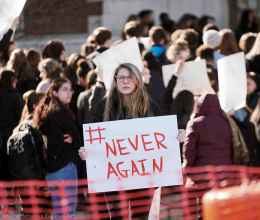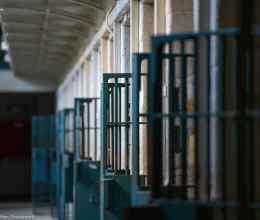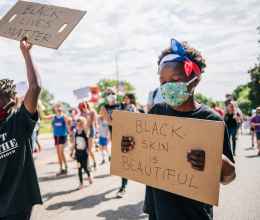
What does the “Marjory Stoneman Douglas High School Public Safety Act” mean for students?
Heightened Security
More Law Enforcement at Schools
At least one “Safe School Officer” will be required at each school. This requirement can be met with
- School Resource Officers, who are employed by law enforcement agencies,
- School Safety Officers, who may be employed by the district school board, and/or
- School Guardians, armed school employees who are authorized to act in active assailant incidents at school.
Because the Legislature did not provide enough funding to station a law enforcement officer at every school, there is increased pressure for schools to use school guardians and/or to siphon funds away from other educational programs that could be more effective at preventing risks to school safety. Meanwhile, some sheriffs have resisted creating guardian programs, citing liability concerns.
Increased Surveillance
The bill directs the Florida Department of Education’s (DOE) Office of Safe Schools to work with the Florida Department of Law Enforcement to create a "centralized integrated data repository and data analytics resources" that consolidates data from at a minimum: social media, the Department of Children and Families, the Department of Law Enforcement, the Department of Juvenile Justice and local law enforcement. The bill also purports to allow vast information sharing among government entities and their contractors, despite confidentiality, in the name of safety.
The bill also required DOE to acquire a mobile app, FortifyFL, intended to allow the public to report suspicious activity to authorities anonymously; however, there have been concerns about the app's privacy agreement and use of user data. While the legislation did not require it, DOE is also acquiring a social media monitoring app that will gather data, including personal posts, from public social media pages to feed into the integrated data repository.
Structure of school safety
The School districts will be designating a district school safety specialist to serve as the district’s primary point of public contact for public school safety functions and a threat assessment team at each school. The Public School Emergency Response Learning System Program will assist school personnel in preparing for and responding to active emergency situations and to implement local notification systems for all Florida public schools
Risks
Increased Youth Arrests: The presence of law enforcement in schools is associated with an increase in arrests for petty crimes like disorderly conduct, currently the third most common offense leading to arrests in Florida’s schools (after fights and misdemeanor drug offenses). Such arrests fundamentally alter the course of a youth’s life. Although the arrest rate for youth in the community fell by 12 percent in FY 2017-18, the school arrest rate increased by 2 percent. This is the first increase in the school arrest rate in at least four years.
Disparate Treatment of Minorities: Youth of color, LGBTQ+ youth, and youth with disabilities are more likely to be arrested than their peers for the same offenses.
Minority Victims of Gun Violence: Minorities are more likely to be arrested than their white peers for the same offenses. Studies have shown that black boys are frequently perceived as older than they are and inaccurately as threats. This may contribute to the fact that black people are 3 times as likely to be shot by law enforcement than white people.
Advocacy Points:
- Clearly defined role for law enforcement in schools as protection, not discipline.
- Required training in de-escalation techniques, adolescent development, and implicit bias for law enforcement and anyone armed on campus.
- Required annual psychological evaluations and drug testing of any armed individuals on campus.
- Increased involvement of school counselors in discipline policies and procedures.
- Focused work on improving/protecting school climate through restorative strategies programs and other effective school discipline.
Improved Mental Health Access
The Legislature also took steps to improve collaboration among agencies working with youth and to improve access to mental health services. Such efforts must be supported to ensure full funding and commitment. Furthermore, youth’s privacy rights much be prioritized and we must be careful not villainize those struggling with mental health issues or create artificial barriers or consequences to access to mental health services.
Read school districts' Mental Health Plans.
The bill codified the Multiagency Service Network for Students with Severe Emotional Disturbance (SEDNET) as a function of the DOE in partnership with other state, regional, and local entities to facilitate collaboration and communication between the specified entities.
The bill also created the mental health assistance allocation to provide supplemental funding to assist school districts and charter schools in establishing or expanding comprehensive mental health programs and to connect students and families with appropriate services.
Advocacy Points
- Limit school counselors non-counseling responsibilities.
- Increase local and state funding for programming to improve executive functioning (decision making skills, stress management, etc.).
- Protect student privacy.
Where to direct your advocacy:
- School Board – requirements for law enforcement/armed guardians at schools, student privacy, improvements to school climate.
- Local Law Enforcement – requirements for law enforcement/armed guardians at schools.
- Local Commission – funding for programs to improve school climate.
- Florida Legislature – funding for programs to improve school climate, including effective discipline programs like restorative strategies and school counselors and other staff trained to intervene with students struggling with mental health issues; remove the requirement for an armed guard at every school; clearly define role for armed guards as protection, not discipline.







